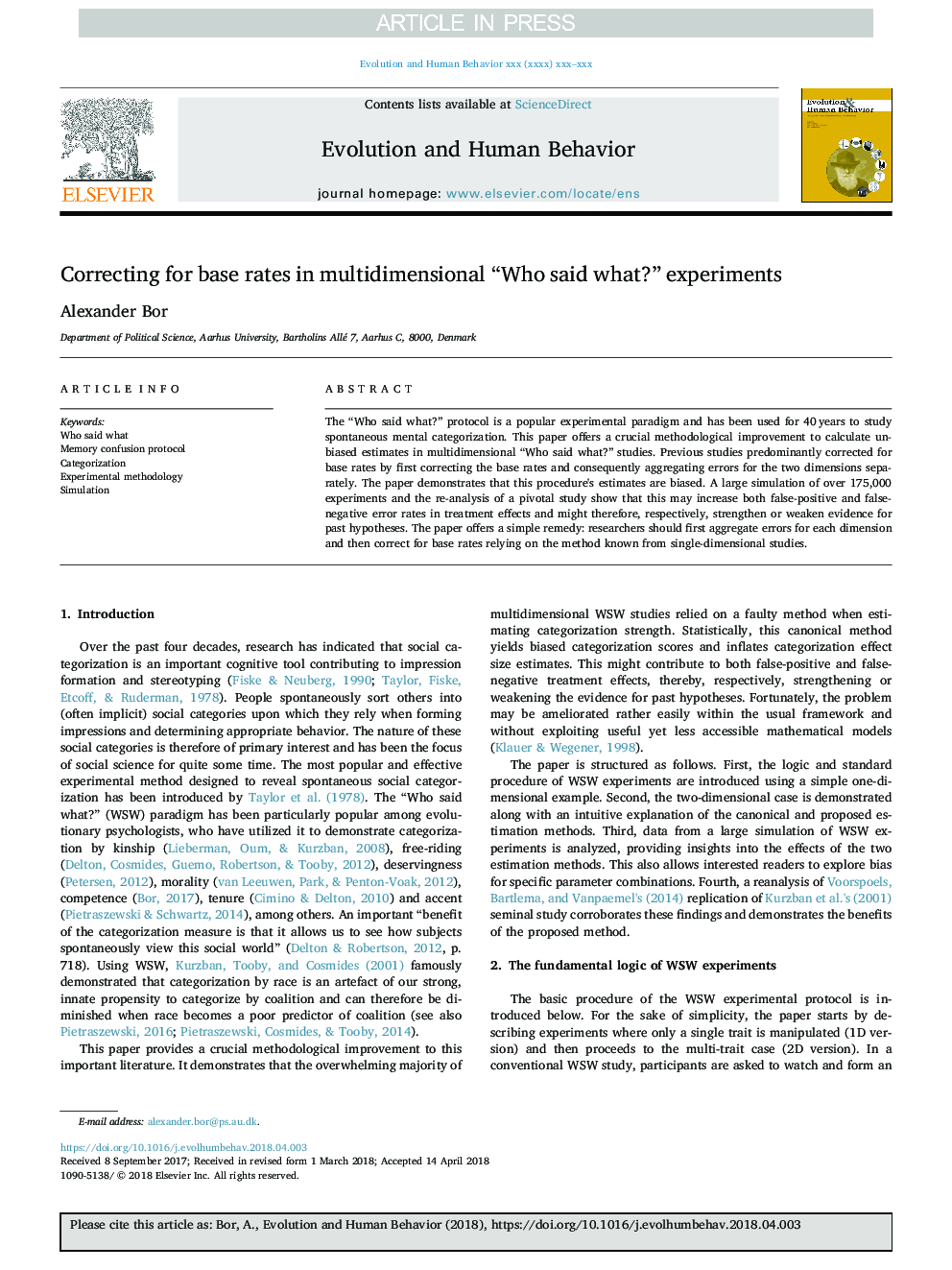| Article ID | Journal | Published Year | Pages | File Type |
|---|---|---|---|---|
| 7316121 | Evolution and Human Behavior | 2018 | 6 Pages |
Abstract
The “Who said what?” protocol is a popular experimental paradigm and has been used for 40â¯years to study spontaneous mental categorization. This paper offers a crucial methodological improvement to calculate unbiased estimates in multidimensional “Who said what?” studies. Previous studies predominantly corrected for base rates by first correcting the base rates and consequently aggregating errors for the two dimensions separately. The paper demonstrates that this procedure's estimates are biased. A large simulation of over 175,000 experiments and the re-analysis of a pivotal study show that this may increase both false-positive and false-negative error rates in treatment effects and might therefore, respectively, strengthen or weaken evidence for past hypotheses. The paper offers a simple remedy: researchers should first aggregate errors for each dimension and then correct for base rates relying on the method known from single-dimensional studies.
Related Topics
Life Sciences
Agricultural and Biological Sciences
Ecology, Evolution, Behavior and Systematics
Authors
Alexander Bor,
